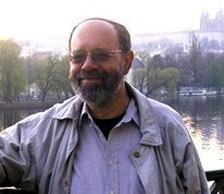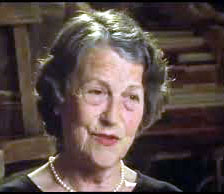|
November 9, 2013 marked the 75th anniversary of Kristallnacht (the Night of Broken Glass) when Nazi sponsored pogroms against the Jews and their property in Germany and Austria sparked the beginning of Hitler's Final Solution and the Holocaust.
During the Third Reich all culture was brought under the control of the Culture Chamber formed in 1933 and run by Joseph Goebbels whose objective was to "purify' Germany with art glorifying the Aryan race, nationalism, antisemitism and the regime's imperialist goals. On May 10, 1933 over 25,000 'subversive' books were burnt in a "cleansing by fire'. Works by the great masters of modern art were ridiculed as 'Degenerate', looted from Jewish households, stolen from museums and often kept in private collections or resold for Nazi gain. Music that didn't conform to Hitler's Nazification was censored and composers and musicians not allowed to work. Most Jewish artists who didn't escape perished in concentration camps, yet some lived on, as did pianist Edith Kraus who survived Terezin.
As world events continue to escalate the tragic scope of man's inhumanity to man before our eyes, let us not forget the individuals who suffered and their stories once hidden in a shameful past.
In remembrance I would like to share with Scene4 readers this article I wrote in 1989.
Rock, cradle, rock
How still the world is.
No sound disturbs the sweet rest,
Sleep my little child sleep.
Rock, cradle, rock,
How still the world is.
The irony of these sweet words, a chorus from the lullaby "Wiegala" by a mother for her young son, is that they were written in Terezin during the Holocaust. Both Ilse Weber, the poet, and her son, Tommy died in Auschwitz.
Ilse Weber was one of over 100,000 Jews incarcerated in Terezin between the years 1941 to 1945. Located north of Prague, Czechoslovakia, Terezin was evacuated in 1941 to become a transport town, a way-station for European Jews to Auschwitz. The Nazis' sinister deceit was to portray Terezin as a "paradise-ghetto". When they created this "spa", a "model town" where Jews could safely endure the war, they gathered together some of the continent's finest musicians.
The miracle of Terezin was the rich cultural life that thrived there despite tragic hardships. Those who lost their lives left a legacy of original compositions of enormous range. The memory of their lives and music has been commemorated through the efforts of the Terezin Music Memorial Project, founded in Israel in 1986 by Tel Aviv University musicologist, Dr. David Bloch.

Dr. Bloch, accompanied by Holocaust survivor, Edith Kraus, was guest lecturer at the critically acclaimed "Composers of the Holocaust" concert (presented by Mimi Stern-Wolfe's Downtown Music Productions, Inc. in collaboration with the Holocaust Program at the Emanu-El Midtown Y, NYC). In his opening speech, Dr. Bloch explained, "Being deprived of connection with the outside world, the occupants of Terezin were forced in upon themselves for self-expression and mutual sharing of cultural-spiritual experiences. These experiences were profound and courageous acts of resistance and offered a respite in which they could simultaneously forget their daily suffering and foreboding of an unknown fate."
He unveiled historic tapes, photographs, drawings and footage from the Nazi propaganda film "Hitler Gives the Jews a Town". Music played an important role in this "documentary" of the "happy life" of Terezin, created to offset rumors of bestiality.
The program presented works by four of Terezin's finest composers" "Piano Sonata" by Gideon Klein (1919-1945); "Sonata for Violin and Piano" and "Sextet for Strings" by Erwin Schullhoff (1894-1942) and "Suite for Piano" by Pavel Haas (1899-1944). When Edith Kraus performed Viktor Ullman's (1898-1944) "Piano Sonata No.6", a piece she premiered in Terezin, her striking figure at the piano, poised and accomplished, brought home to the audience the melancholy emotions of its first captive listeners.
Although there was no apparent "Terezin Style", in its sophisticated scope the chamber music reflects dark days without hope and lives shattered in a slow passage to oblivion. One can hear the long marches of deportation and envision desolate landscapes. Dr. Bloch pointed out that certain passages are symbolically significant, making musical reference to popular operettas, Moravian folk and Zionist songs as well as cantorial styles. These nostalgic motifs were used as reminders of more hopeful years.
After the concert, I was fortunate to meet with Dr. Bloch and Edith Kraus, who often performs for the Terezin Music Memorial Project. Edith is remarkable not only because she survived Terezin, but because of the devotion with which she continues to perform Terezin music.

"I am old enough to be retired, but I make an exception for Terezin music. I play it often. I feel I have to do it."
Born in Vienna, Edith grew up in Prague. As a child prodigy, she gave her first concert at age 11. After completing her studies with renowned pianist, Arthur Schnabel in Berlin, she began her recital career and often recorded for Radio Prague.
Taken to Terezin in 1942 at age 29, Edith stayed until the end of the war. "No one has enough fantasy to imagine what was going on. The woman with her mattress next to me died of typhus. We were constantly hungry and the worst of it was that we were afraid to go to Poland. There were transports and we were afraid to be on the lists."
"We didn't know about the gas chambers until the end of the war. We thought we were going to another camp, but I think the governing Jewish committee knew. When my husband was taken away, I asked one of the Council Elders whether I should go with him and he said, "Don't, you wouldn't stay with him." I lost my first husband, my father, my sister, aunts and uncles."
On arrival everyone in Terezin did a "hunderschaft", 100 hours of work before being allocated a regular 8-hour job. Edith was first assigned to care for the elderly, then worked everyday cutting mica. On concert days, she was allowed to leave early.
In the beginning, the concerts, organized by the "Freizeitgestaltung", met with Nazi disinterest. At her first concert in Terezin, Edith played without music on a piano with no legs. Musical scores and instruments had to be smuggled in. Later, the Nazis encouraged cultural activities when they realized that they promoted a positive image of the ghetto to the international community.
"I was lucky to stay until the end. The music helped me psychologically and I believe they kept me because of my playing. I gave many, many concerts. People were so eager to hear music. There was a park with a music pavilion and two concert halls. There were so small, I had to give each concert several times. There was even a fake coffee house where they played jazz and cabaret. They gave us fake money and of course, there was no coffee or cake. When we played it was only for the Jews, never the Germans.
"I knew all the composers of Terezin. Each composer had his own style. Their music was very emotional and romantic. Ullman was a student of Schoenberg in his early years and active as a reviewer and producer at Terezin. Pavel Haas come from Brno and was a student of Janaceck. Hans Krasa wrote the popular children's opera, "Brundibar". Gideon Klein was a very young, gifted man who was a talented pianist. His style is modern.
"Once a week, on Monday morning, a schedule was posted in the office of the "Freizeitgestaltung" listing events of orchestral, choral, recital, opera and jazz music as well as special performances for the elderly. The range of musical performance provided an outlet for satirical protest as well. Peter Klein wrote the libretto for the opera, "The Emperor Atlantis" and Viktor Ullman composed the score in a style reminiscent of Kurt Weil. An allegory of the Third Reich, the Emperor rules the corrupt empire of Atlantis. When he orders Death to lead his army to war, Death goes on Strike, protesting the senseless slaughter. Although rehearsals began in the autumn of 1944, frequent transports constantly prevented the opera from being produced."
I asked Dr. Bloch what motivated his creation of the Terezin Memorial Project. "I was first introduced to Terezin music when Naomi Lev, a pianist colleague, played the "Piano Sonata" by Gideon Klein. I was stunned by its power and beauty. Following my reading of Joza Karas' book, "The Music of Terezin 1941-1945" and my meeting with the author in Connecticut, I realized that Terezin music represented a unique and moving way to communicate an experience which, for those who did not suffer it, may seem unfathomable.
"Since I established the Project, following the highly successful "Kaddish for Terezin" concert sponsored by B'nai B'rith in London's Canterbury Cathedral in 1986, we have produced many concerts. The project aims to make Terezin music live through concerts, lectures and recordings and is rapidly becoming international. For the 1989-90 season, music events are planned for Los Angeles, Pittsburgh, Montreal and possibly Europe, South America and Australia.
The power of music to reveal a truth beyond words and to heal was able to give a sense of solace and dignity to the victims of Terezin. The music created there is not only a testament to the memory of the Holocaust, but music of the highest quality that deserves to be known throughout the world."
MUSIC IN MEMORIAM
Edith Kraus 1913-2013
David Bloch 1939-2010
|